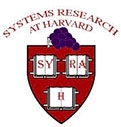4.2 Neighbor Decay
Researchers have posited that a network coordinate subsystem could become a useful component of numerous large-scale distributed applications, particularly if it could perform its jobpassively, that is, without generating any extra traffic. In our Azureus implementation, this passivity was forced upon us: we had no control over the selection of which nodes we gossipped with or when we gossipped with them, because the information necessary for a coordinate update was piggybacked on to other application-level messages, e.g., DHT routing table maintenance. Due to this passivity and to churn, nodes did not have fixed sets of neighbors with which they could expect regular exchanges. In fact, nodes would frequently receive 1-3 updates from a remote node as that node was being tested for entry into the routing table and then never hear from that node again. The net effect of these limited exchanges was that each node's ``working set'' was much smaller than the number of nodes with which it actually communicated. Nodes were having blips of communication with many nodes, but constant communication with few. The goal of neighbor decay is to expand the size of the working set, which in turn improves accuracy.
A standard, gossip-based coordinate update involves taking new information from a single remote node and optimizing the local coordinate with respect to that node. If some set of remote nodes is sampled at approximately the same frequency, a node's coordinate will become optimized with respect to these remote coordinates (which are in turn performing the same process with their neighbors). However, if some remote nodes are sampled at a far greater frequency than others, the local coordinate optimization process will become skewed toward these nodes. In the theoretical limit, the result would be the same, but in practice, these skewed updates - a problem that could be expected in any passive implementation - slow the global optimization process.
Our solution to the problem of skewed neighbor updates is simple. Instead of refining our coordinate with respect to the remote node from which we just received new information, we refine it with respect to all nodes from which we have recently received an update. To normalize the sum of the forces of this recent neighbor set, we scale the force of each neighbor by its age: older information receives less weight. This allows nodes that we hear from only a few times to have a lasting, smooth effect on our coordinate. Algorithmically, we set the effect of a neighbor j on the aggregate force F to be:
where ![]() is the age of our knowledge of j and
is the age of our knowledge of j and ![]() is the age of the oldest neighbor.
is the age of the oldest neighbor.
This use of an expanded neighbor set that decays slowly over time has two main benefits. First, because the force from each update is effectively sliced up and distributed over time, nodes' coordinates do not jump to locations where they have high error with respect to other members of the neighbor set. Second, by keeping track of recent, but not old, neighbors, neighbor decayacts to increase the effective size of the neighbor set, which in turn leads to higher global accuracy. In our implementation, nodes expired from the recent neighbor set after 30 minutes.
Note the distinct effects of neighbor decay from both latency and update filters. Latency filters generate a current, expected round trip time to a remote node and update filters prevent system-level coordinate updates from spuriously affecting application behavior. Neighbor decay, in contrast, handles the problem of skewed updates that can occur when network coordinates are maintained as a passive subsystem. It allows the smooth incorporation of information from a wider range of neighbors, particularly in a system where contact between nodes is highly transient. In simulation, we confirmed that neighbor decay substantially increased stability and moderately improved continuous relative error.
Jonathan Ledlie 2007-02-23